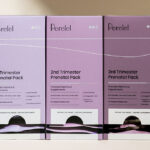Childbirth 101

Ideally, all pregnancy roads lead to the same destination: an uncomplicated birth and a healthy baby. But there are many paths through labor and delivery, each offering its own tools for overcoming the pain, anxiety and other hurdles you might encounter along the way. A good childbirth preparation course can demystify the labor process, shoring up your confidence and strengthening the bond between you and your partner. But which should you choose? Answer the questions below to discover your birth-method match.
1. You’re about to travel to a country you’ve never visited before. What do you do before you leave?
a. Pick up a guidebook that will give me an overview of the sights, so I can plan my own trip.
b. Head to the library to read up. I want to understand my destination’s culture inside and out.
c. Allow myself to daydream about the things I’ll see and do—this will put me in the right mind-set to fully experience the trip.
d. Try to let go of preconceived notions. I want to do my best to enjoy the voyage, come what may.
2. When it comes to childbirth and pain, you figure:
a. Pain is a natural and even useful part of the birth process.
b. I’ll be able to manage the pain through relaxation techniques.
c. Birth can be calm and peaceful—there’s no reason to expect severe pain.
d. Pain is inevitable, but by understanding how I respond to pain, I can learn some ways to cope.
3. It’s the end of a stressful day. To regroup, you:
a. Try to take my mind off my anxieties. A massage might help.
b. Consciously relax my shoulders, loosen my jaw and unfurrow my brow.
c. Take some deep breaths and envision myself in a more serene setting.
d. Spend some time reflecting on what is stressing me out and why.
4. How much time are you able to commit to childbirth classes?
a. Three or four fairly intense sessions sounds right for me.
b. As long as it takes. I’m prepared to spend several months learning all I need to know.
c. Five or so shorter classes.
d. I can attend a few sessions, but some flexible phone or online options would be helpful.
5. Think of the subject that gave you the most trouble in high school. What did you do to pass?
a. I looked for main ideas within the subject and built my knowledge around those.
b. I found a study partner. Together, we worked through the material comprehensively.
c. Getting over my anxiety was the biggest obstacle.
d. Instead of focusing on a specific letter grade, I thought about what I hoped to gain from studying the subject.
6. How do you see your partner participating in the birthing process?
a. Just being present is important. My partner doesn’t necessarily need to take a hands-on role.
b. My partner will be fully active and engaged, coaching me through the experience.
c. I’ll rely on my partner to help keep me relaxed and focused.
d. Birth is a rite of passage for my partner, too.
7. You’re getting in shape for a marathon. Which aspect of your training regimen do you think will get you across the finish line in the best time?
a. Nutrition, exercise, mental training—all of it works together.
b. Having a coach who is as invested in my success as I am.
c. Mental conditioning is the key.
d. I’m not so concerned about my time. The experience and effort are most important.
8. When it comes to pregnancy and parenting advice:
a. I’m most comfortable with tried-and-true sources.
b. I value word-of-mouth. A lot can be learned from the experiences of other parents.
c. I’m open to alternative approaches and try to listen to intuition.
d. I’m drawn to new perspectives and philosophies that challenge popular notions of birth.
_______________________________________________________________
If you chose mostly A’s,
consider Lamaze
Perhaps the best-known childbirth preparation approach, Lamaze is grounded in six “Healthy Birth Practices,” each based on a growing body of research about pregnancy and birth. Among the practices Lamaze promotes are letting labor start on its own, allowing mothers to move freely through-out labor and avoiding the routine use of epidurals, episiotomies and other medical interventions.
“It’s not a one-size-fits-all approach,” explains Liz Abbene, CD, Lamaze instructor in St. Paul, Minnesota. “It’s about knowing what is an appropriate use of an intervention and what are your alternatives.”
Lamaze courses last a total of 12 hours, typically spread over three or four sessions. Classes discuss the process of labor, teach focused breathing and other relaxation techniques, offer suggestions on how to communicate with health care professionals and provide an introduction to breastfeeding and newborn care.
“It’s not about natural birth or unmedicated birth,” Abbene says. “It’s about building your confidence week by week. It’s about trust in your body and trust in your baby.”
For more information or to find a class, visit lamaze.org.
If you chose mostly B’s,
consider the Bradley Method
The Bradley Method aims to help women give birth naturally and without pain medication. During 12 weeks of intensive classes, Bradley instructors cover everything from nutrition and exercise to labor and early parenting. Participants receive a 130-page workbook with study guides, pain-management techniques and other resources.
The approach is particularly well-suited to women who feel more confident the better informed they are, says Karrie Nelson, a Bradley instructor in Medford, Oregon. “We want women to have confidence in the natural process,” she explains. “There’s no anxiety because you know what to expect and you’re prepared to deal with the unexpected.”
Relaxation is key to pain management in the Bradley Method, and techniques are practiced in labor rehearsals throughout the course. “You get out of the way of your body, and you relax as if your life depended on it,” says Susan McCutcheon, author of Natural Childbirth the Bradley Way.
Another hallmark of the Bradley Method is the birth partner’s central role as labor coach, notes McCutcheon. “He has to learn as much as she does.”
For more information or to find a class, visit bradleybirth.com.
If you chose mostly C’s,
consider HypnoBirthing
HypnoBirthing, also known as the Mongan Method, was developed by hypnotherapist Marie Mongan and is based on the theories of English obstetrician Grantly Dick-Read, who promoted natural childbirth in the 1920s. The method draws on self-hypnosis, visualization and other mind-body techniques to remove pain from the birth experience.
“All babies should come into the world in a calm, joyful manner,” says Pamela Galtelli, a HypnoBirthing educator in Alameda, California. “If you can eliminate fear, you can eliminate tension. If you can eliminate tension, you can eliminate pain.”
Material is typically presented over five sessions, each two and a half hours long. Teachers discuss nutrition, exercise and the labor process. At the heart of the approach, though, is hypnosis, a sensation Galtelli likens to daydreaming or being engrossed in a book. You’re awake but calm.
Participants receive Mongan’s book HypnoBirthing: The Mongan Method, as well as five hypnosis scripts, two relaxation CDs and other resources.
For information or to find a class, visit hypnobirthing.com.
If you chose mostly D’s,
consider Birthing from Within
Midwife Pam England developed Birthing From Within when, despite deep commitment and extensive preparation, her planned home birth resulted in a C-section.
Many women whose birth experiences were similar felt as though they had failed, England noticed, so she set about creating a new way of educating parents on childbirth.
“We want to move away from the idea that how birth happens says something about you,” says Virginia Bobro, co-owner and managing director of Birthing from Within in Santa Barbara, California. “We have a different idea of what empowerment is. Empowerment does not come from getting what you want.”
Birthing From Within classes provide a practical and realistic overview of labor and birth, and they offer guidance on nutrition and strategies for pain management. Teachers, who are called mentors, also encourage participants to reflect and explore their own beliefs and fears about childbirth.
“We are trying to help them become less attached to the outcomes,” Bobro explains. If a student wants to avoid a C-section, her mentor might give some suggestions for decreasing the likelihood of surgery. But the mentor might also ask the woman to reflect on why she doesn’t want a C-section and consider how she will cope if one is necessary. Emphasizes Bobro, “There is no failure in birth.”
For more information or to find a class, visit birthingfromwithin.com.







